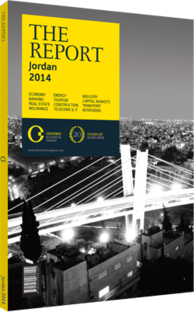Scientific method: Emphasis on research and development aims to boost innovation in energy and medicine
According to the latest available data from the World Bank, Jordan spent 0.43% of GDP on scientific research in 2008. This was up from 0.34% in 2002, the second latest year for which data is available. Although substantially below levels in the West, this is nonetheless well above countries in the region for which data is available, with Iraq spending 0.06% in 2011, for example, and Saudi Arabia 0.08% in 2009 (latest available data). Furthermore, the kingdom intends to more than double levels in the coming years. In absolute terms, spending stood at around JD68.6m ($96.9m) in 2008.
Given its resource challenges, the main priorities for R&D in Jordan are the energy and water sectors. Other major areas of focus include pharmaceuticals, which accounted for 38% of Jordan’s patent applications in 1998-2012, according to the World Intellectual Property Organisation, followed by analysis of biological materials (13%) and organic fine chemistry (7.5%).
Oversight
The Higher Council for Science and Technology, which is chaired by Prince El Hassan bin Talal and includes government ministers and other high-ranking officials, is responsible for drawing up science and technology policy and research priorities. In late 2010 the council published the kingdom’s research priorities until 2020, covering a wide range of fields; in the areas of technology and medicine these include nanotechnology, biotechnology, the development of new materials, energy technologies such as solar-powered desalination, stem cell research and diabetes. In 2013 the council also published its 2013-17 National Policy and Strategy for Science, Technology and Innovation, which includes 24 projects to be implemented at a cost of nearly JD10m ($14.13m). Key targets under the programme include raising the proportion of GDP devoted to R&D to 1%, more than double the level in 2008.
Funding
The Scientific Research Support Fund helps facilitate research in universities. In addition to funding from the state and donations, it is also financed by revenues from patents and investments that it has supported. In the four years to the end of 2013, it provided assistance to 189 projects, at a cost of JD14m ($19.78m). According to the fund, the most popular field in terms of the applications it receives is agricultural research. Private sources of funding include the Applied Scientific Research Fund, which issues between three and six grants a year, and private universities.
Research Institutions
Most university-based scientific research takes place in state universities. Notable research institutions include the Jordan University of Science and Technology (JUST), which was the highest-ranked Jordanian university in the 2013 QS World University Ranking, placing between 650th and 700th of 3000 and 362nd amongst universities specialising in technology and engineering. In the research category the ranking gave JUST a score of three out of five. JUST is home to the Princess Haya Biotechnology Centre, established in 2005, which focuses on genomics, metabolomics and proteomics in particular. Current projects include research into biological factors behind psychological disorders; plant medicinal studies, preclinical studies and clinical trials (in cooperation with King Abdullah University Hospital); and applied research into renewable energy, oil shale and energy efficiency.
Another key research institution is the University of Jordan (the only other local university listed in the QS rankings). It operates seven research centres, including ones devoted to water, energy and the environment, and cell therapy. Major research projects in 2013 included an effort to build a cornea using stem cells.
Nuclear Project
A major new research initiative at JUST is set to dwarf such activities in terms of funding and push it further up the rankings, while also helping to address Jordan’s energy problems. In August 2013 the Nuclear Regulatory Commission issued a permit for the construction of a $130m, 5-MW nuclear research reactor, to be built at JUST. A South Korean consortium headed by Daewoo Engineering and Construction will build the reactor, which is due to enter into operation in 2016. The South Korean government is also financing $70m of the project’s cost through a soft loan.
You have reached the limit of premium articles you can view for free.
Choose from the options below to purchase print or digital editions of our Reports. You can also purchase a website subscription giving you unlimited access to all of our Reports online for 12 months.
If you have already purchased this Report or have a website subscription, please login to continue.

